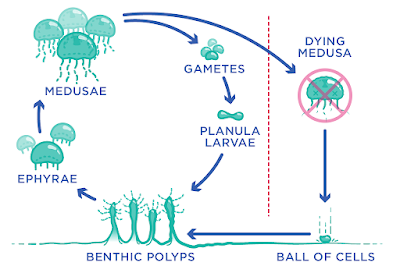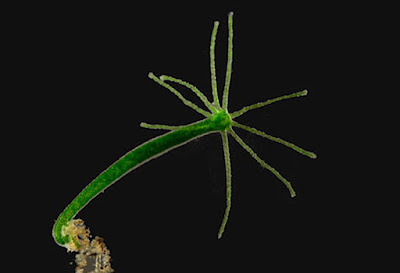- President Donald Trump demanded Iran unconditionally surrender, and that he could order killing the Ayatollah. As you know, the Supreme Leader ordered an operative last year to assassinate Trump before the election.
- Of course, Iranian Supreme Leader Ayatollah Ali Khamenei rejected Trump's threat.
- So the U.S. is now moving its third, and newest, super carrier force, headed by the USS Gerald R. Ford, to the Mediterranean. This will take a little time to get there, perhaps hinting of when action might be taken about the entry of America into that war. Not boots on the ground, but B-2s with bunker bombs to target Iran nuclear facilities.
- American personnel in Israel are being removed. Other embassies will soon follow.
- What could Iran do if the U.S. actually joins Israel in these air strikes?
- So far, Iran has launched more than 370 missiles and hundreds of drones into Israel, killing at least 24.
- The U.S. operates at least 19 military sites in the Middle East with 40,000 to 50,000 personnel. They would be in serious jeopardy. Here is a video on the U.S. military currently in the Middle East.
- In addition, Iran will disrupt passage through the Strait of Hormuz, through which 20% of the world oil supply flows. Gasoline prices will soar into the summer. If you have a cruise planned into the Persian Gulf, you will want to reconsider.
- Exposed Americans in the region will be taken as hostages. Certainly cancel all plans to travel to many portions of the Middle East. Those living in these regions will be vulnerable.
- Suicide bombings, even in the U.S., could disrupt a range of activities.
On this sci-tech Wednesday, I refer to something from Scientific American: Lifespan Limits.
Kind of hard to read, so click on this to view these graphics. In summary:
- This article starts with Caenorhabditis elegans with a lifespan of 40 days.
- A mayfly in this article is said to live 2 years.
- However, from other sources, mayflies are generally considered to have the shortest longevity of any living organism. the Dolania americana male lives for less than an hour, while the female only a few minutes to breed. Some mayflies can lay 10,000 eggs. Most of the development occurs while the female is in the larva stage.
- But Wikipedia mentions that there are 3000 different species, and no doubt at least one of them must live much longer.
- Incidentally most mosquitos only are alive for two weeks. The female procreates well, 300 eggs, three times.
- The pygmy goby, a tiny marine fish has the shortest life for any vertebrate, up to three weeks.
- Shortest living reptile? Labord's chameleon, 1.3 years. T-Rex? 28 years.
- Next listed is the house mice at 4 years. Turns out that this lifespan is only in a laboratory. A wild house mice only remains alive for 4 months.
- The Western honeybee is listed at 8 years. However, from this source, and many others, the worker bee only lives for 5-7 weeks in the winter and 20 weeks in the winter, while the queen can live up to 5 years. So, again, largely wrong. And this is Scientific American!
- Then a leap to the common cow, which lives up to 20 years.
- So I had to check, and this is about right.
- However, in the dairy industry, the productive period only is five years, and this is when it is slaughtered and sold as low-grade beef. This article is titled, Dairy Cows: How Long Do Dairy Cattle Live? Do They suffer? The answer is, terribly. Here is just one quote, and it gets worse, as to how they are killed.
Industrial-scale dairy farms separate mother cows from their calves, often within hours of birth. Because they cannot produce milk, these dairy farms often send male calves to slaughter. This cycle of birth, traumatic separation, and killing continues throughout a dairy cow's life until she is "spent"—no longer able to produce milk—and she herself is sent to slaughter. Overall, even though milk isn't the actual flesh of an animal, its production still comes at the expense of many animals' lives and wellbeing.
- 90% of cows in the U.S. are Holstein, as is the one above.
- Domestic dogs have a max of 27 years, and cats up to 30. However, typically, pet dogs have a lifespan of 10-13 years, not much different for a home cat. Feral cat? Only a few years.
- Your black garden ant? 28 years.
- Giant squid, 35 years. However, this article says:
- Only 6 years.
- Has a large brain, complex nervous system, eight arms and two longer tentacles.
- Eyes as large as a dinner plate.
- Grows to 43 feet or so in length and 700 pounds.
- I'll skip a few to get to human, which can live to 122.5 years, but typically 71.
- Skip a few more and get to the Greenland shark, 392 years.
- This article says, typically 250, but possibly up to 500 years.
- Grows to 20 feet long.
- Why is the lifespan so long? They live in very cold water, thus their metabolism is low.
- I will jump to the Great Basin bristlecone pine, 5602 years.
- Not sure where that number came from, but Wikipedia says a specimen in California was 5062 years old in 2010. However, this scientist kept it secret and has since passed away. Tree has never been found. I suspect that the Scientific American figure should not be 5602, but 5062. Another error.
- Grows on tall mountains in California, Nevada and Utah.
- Methuselah is 4856 years old, and is the oldest known non-clonal organism on Earth. Lives in the Inyo National Forest between California's Sierra Nevada range and the Nevada border.
- Again, cold is an important factor, for these trees only grow at high elevations, and those found on north-facing slopes average 2000 years old, while those on the south side, only 1000 years.
- Not listed is another competitor for oldest living thing on Earth. In Patagonia, Chile, this alerce tree is 5,484 years old, known as Alerce Milenario or Gran Abuelo. Here is another source. Most dendrochronologists, however, are skeptical.
- Finally, the longest lifespan: Hexactinellid Sea Sponge, 15,000 years.
- Mostly found at cold depths, in Antarctic and Northern Pacific waters.
- The exact age is hard to measure.
- A specimen of Scolymastra joubini could well be 23,000 years old.
- There is a problem, though, for the field has not quite embraced this entry.
- Watch this video of the oldest living bacteria that was trapped for 2 billion years. Or read this rather complete article, which explains what these bacteria consumed to keep alive, etc.
- What about the 3.5 million-year-old bacteria, with which a Russian scientist injected himself?
- This Bacillus F was discovered in 2009, frozen in Siberian permafrost.
- So Anatoli Brouchkov went ahead and shared his body with them. Worried? He points out that no one knows how aspirin works. He is still alive, heads the Geocryology Department at Moscow State University and feels healthier and stronger. This bacteria, he says, might hold the key to extending human life.
- He says that mice exposed to Bf live and stay fertile longer.
- He has sequenced this bacteria's DNA.
- Turritopsis dohrnii, the Immortal Jellyfish?
- They hang out in oceans around the world and can revert back to an earlier state of their life cycle.
- However, no way to check if any one of them has lived for many thousands of years.
- Hydra are simple animals that live in freshwater ponds and rivers. Their claim to immortality? They don't go through senescence at all. Stem cells have the capacity for infinite self-renewal, having to do with FoxO genes.
- Are lobsters immortal?
- They are able to endlessly repair their DNA.
- Unfortunately, there is a catch. They grow too big for their own shells. They keep going to the process of molting many times, running out of energy, and then eventually die.
- The 8 oldest lobsters.
- In 2005, George was caught in Newfoundland, Canada, but ended up in New York City. Weighed 20 pounds and was estimated to be 140 years old. PETA was contacted, and they convinced the restaurant to release him back into the ocean. He was the oldest.
- The youngster in this list is the Big Dipper Lobster, also 20 pounds, captured in 2015. The crew took photos (to the right, above) and released him back.
I should warn you that tomorrow is a national holiday, Juneteenth.
- My blog yesterday focused on this subject, and I was thinking about delaying it to June 19, but didn't. Juneteenth commemorates the emancipation of enslaved African Americans, and is one of eleven federal holidays.
- President Trump has rolled back various diversity, equity and inclusion initiatives, especially those promulgated by Joe Biden, and there is a wild rumor that he might want to somehow substitute Juneteenth with something more MAGA in concept. Of course, Congress does this, not the president. But he might if he becomes a dictator.
- And, oh, by the way, Republican Congresslady Claudia Tenney has introduced legislation to make President Trump's birthday a public holiday. That would be June 14, only a few days away from Juneteenth.
-





























Comments
Post a Comment